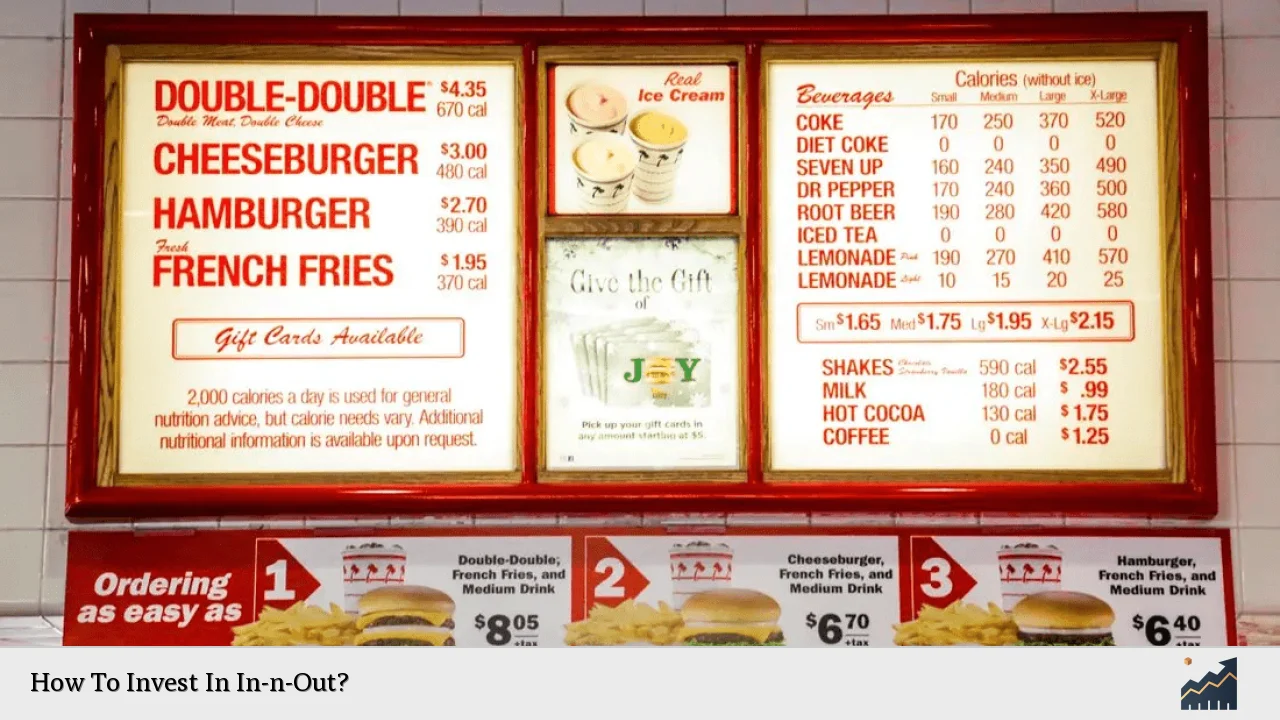Investing in In-N-Out Burger presents a unique challenge due to the company's status as a privately owned entity that does not offer public shares or franchising opportunities. Founded in 1948, In-N-Out has built a strong reputation for quality and simplicity, making it a beloved brand primarily on the West Coast of the United States. This article will explore the various avenues available for those interested in investing in this iconic fast-food chain, despite its private ownership status.
| Aspect | Details |
|---|---|
| Founded | 1948 |
| Headquarters | Irvine, California |
| Locations | Approx. 400 |
| Annual Revenue | $2 billion |
Understanding In-N-Out's Business Model
In-N-Out Burger operates under a corporate-owned model, meaning that all locations are directly managed by the company rather than through franchise agreements. This strategy allows for greater control over operational standards, ensuring consistent quality and service across all outlets. The brand is known for its limited menu, focusing on fresh ingredients and made-to-order meals, which has helped it maintain a loyal customer base.
The absence of franchising opportunities means that traditional routes for investment—such as purchasing a franchise—are not available. Instead, potential investors need to consider alternative methods to engage with the brand financially.
In-N-Out has consistently avoided going public, which means there are no stocks available for purchase on any exchange. This decision has allowed the company to maintain its family-oriented culture and focus on quality without external pressures from shareholders. The current owner, Lynsi Snyder, emphasizes preserving the brand's legacy and values.
Exploring Investment Options
Although direct investment in In-N-Out is not feasible through stock purchases or franchising, there are several indirect methods that interested parties can consider:
- Pre-IPO Opportunities: Investors can look for platforms that offer shares in private companies before they go public. Websites like Linqto and EquityZen sometimes list pre-IPO shares, but availability can vary significantly.
- Supplier Investments: Another indirect method is to identify suppliers that provide goods or services to In-N-Out and consider investing in those companies. This approach allows investors to benefit from In-N-Out's success indirectly.
- Competitor Stocks: Investing in publicly traded competitors like McDonald's or Wendy's can also be an option. While these companies operate differently than In-N-Out, they are part of the same industry and can provide exposure to the fast-food market.
- Real Estate Investments: Some investors choose to invest in real estate near In-N-Out locations. The popularity of the chain can drive traffic and increase property values in surrounding areas.
Financial Performance and Growth Potential
In-N-Out Burger has demonstrated impressive financial performance over the years. With annual revenues estimated at around $2 billion, the company continues to grow steadily while maintaining high profit margins. Its commitment to using fresh ingredients and providing excellent customer service has contributed to its cult-like following.
The company's growth strategy focuses on opening new locations primarily within existing markets rather than pursuing aggressive expansion into new regions. This cautious approach allows In-N-Out to maintain quality control over its operations while still reaching new customers.
Investors should note that while In-N-Out has been successful, its private status means that detailed financial information is often unavailable. As such, potential investors must conduct thorough research before pursuing any investment opportunities related to the brand.
The Future of In-N-Out
Looking ahead, In-N-Out Burger is expected to continue expanding its footprint within the United States. The company has plans to open new locations in states like New Mexico and Tennessee, further solidifying its presence beyond California and neighboring states.
Despite its growth ambitions, In-N-Out remains committed to its core values of quality and customer satisfaction. This dedication is reflected in its operational practices, such as never freezing beef patties or using heat lamps for food preparation.
For investors, understanding these operational philosophies is crucial when considering potential investment avenues. The company's focus on maintaining high standards could lead to sustained profitability and brand loyalty over time.
FAQs About How To Invest In In-n-Out
- Can I buy stock in In-N-Out?
No, you cannot buy stock in In-N-Out as it is a privately owned company. - Does In-N-Out offer franchise opportunities?
No, In-N-Out does not offer any franchising opportunities; all locations are company-owned. - What are my options for investing indirectly in In-N-Out?
You can look for pre-IPO shares or invest in companies that supply goods or services to In-N-Out. - How much does it cost to open an In-N-Out franchise?
It is not possible to open an In-N-Out franchise since they do not offer franchising. - What is the revenue of In-N-Out?
In-N-Out generates approximately $2 billion annually.
Investing in a well-established brand like In-N-Out Burger may seem appealing due to its strong market presence and loyal customer base; however, potential investors must navigate the challenges posed by its private ownership structure. By exploring indirect investment options and understanding the company's operational principles, interested parties can still find ways to engage with this iconic fast-food chain financially.

